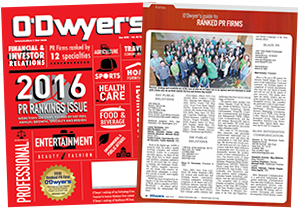|
Jeanine O'Kane |
|
|
The communications around home PSA tests showcase almost everything that’s right and wrong with the fast-expanding boom in DIY diagnostics. On the one hand, the tests provide valuable insights into diseases where early detection is the best path to a cure. On the other hand, with PSA and many other disease markers, standard recommendations are clouded with controversy, and only a physician can help patients thread their way through the maze.
The problem is, there’s no doctor in this picture. But there are functions a DIY test provider can build into a product website that will emulate a personal touch and improve the odds that patients will get all the attention they require.
Medical context
America’s passion for home diagnostic testing is here to stay. Inexpensive kits now provide a window on pregnancy, ovulation, fertility, paternity, blood glucose, cholesterol, HIV, herpes, hepatitis C, urinary tract infections and many other conditions. These home tests are flying off the shelves as time-pressed, cost-conscious, instantly gratified consumers strive to take charge of their own health.
The number and variety of the tests will continue to grow as healthcare costs rise, access to medical information improves, the population ages and innovative technologies push the envelope of what can be diagnosed at home. That’s all the more reason for manufacturers of home diagnostics to fully explain the medical context surrounding their tests.
The moment someone purchases a DIY medical kit, the conventional vendor-customer relationship changes into something more complicated. Because test makers are selling health insights, and not ballpoint pens, the relationship is more like a practitioner and a patient. But on many websites promoting these products, the model still resembles a customer on a checkout line.
Patient-centric testing
To be sure, there are vendors who understand that shoppers may turn into patients — and they treat them as such. If you visit the home page for OraQuick, a DIY HIV test from OraSure Technologies, you’ll learn that a positive test result doesn’t mean you have HIV. Rather, it means “additional testing should be done in a medical setting,” the site explains. The landing page also features a tab called “Find Counseling and Care” with a toll-free number to a 24/7 support line and links to organizations that provide counseling.
OraQuick has taken a page from the healthcare industry’s standard playbook. For years, pharmaceutical companies, insurers, hospitals and other medical service providers have been trying to improve practices so that patients truly come first. Most of these companies are now united under the banner of “patient-centricity.” This rallying cry is rarely heard among vendors of DIY tests or the e-tailers who sell their many of their kits, but this situation is poised for change.
We put significant resources into analyzing how health-related messages and community outreach influence behavior. Sometimes, the messages we script reinforce efforts to prevent illnesses such as diabetes and heart disease. Elsewhere, our communications emphasize the importance of medication adherence, or seek to strengthen collaboration between pharma companies, patient advocacy groups and practitioners in order to improve patient care.
Each of these message strategies might help home diagnostics become a more patient-centric business. Remember, the individuals who seek out these tests are concerned about specific illnesses. That means there are simple steps vendors can take. All websites introducing diagnostic products should, like OraSure, steer visitors to organizations that offer patient support. Tabs on the home page should also provide accurate, easy-to-follow explanations about the disease or condition addressed by the test.
It’s clear that sometimes this advice is hard to implement with a complex illness such as prostate cancer, where there are many testing and treatment controversies. More than five years ago, the U.S. Preventive Services Task Force stopped recommending regular PSA tests for this type of cancer after studies showed little correlation between the results and cancer-related mortality. Some medical organizations endorsed the USPTSF’s advice. Others have vigorously rejected it. The Task Force is now conducting a fresh evaluation and seeking public comment.
Health sciences are a work in progress and public health recommendations are subject to change. The best solution is to point customers toward organizations that can provide responsible advice. Where possible, companies should provide links to websites where medical recommendations are updated regularly based on the latest clinical data.
Unlocking knowledge
This advice is not confined to manufacturers of DIY tests. Pharmacy chains, health clinics and large retailers must all start to think about how these products are presented to the DIY customer base. Every year, more than 10 million Americans visit retail health clinics operated by CVS, Walmart, Target and other national retail chains, according to the Robert Wood Johnson Foundation. Millions of others comparison shop and purchase kits on Amazon. At each of these touch-points, it’s the e-tailer who should strive to educate the consumer on the medical context.
To date, the Food and Drug Administration has taken a laissez faire position toward web-based communications about DIY diagnostics. The agency has issued “buyer beware” warnings regarding Internet distribution of home tests it has not approved. But there are few — if any — cases where the FDA complained because companies failed to point customers to medical professionals.
Consumer interest in DIY diagnostics will only grow. There’s little likelihood medical experts in the next 10 or 20 years will be able to answer all the consumer’s questions about illnesses or treatments, and makers of home diagnostics won’t have those answers either. But companies can communicate with visitors as healthcare consumers, not shoppers in a supermarket. We’re placing powerful diagnostic keys in their hands. We should help them understand the knowledge these keys can unlock.
Jeanine O’Kane is U.S. Managing Director of inVentiv Health PR Group, which comprises Allidura Consumer, Biosector 2, Chamberlain Healthcare PR and Chandler Chicco Agency.




 Lo Isidro, senior director at Real Chemistry with more than a decade of strategic communications and PA experience, has joined Narrative Strategies.
Lo Isidro, senior director at Real Chemistry with more than a decade of strategic communications and PA experience, has joined Narrative Strategies. Nelson Fernandez, former North American chair of APCO Worldwide and managing director of Burson-Marsteller, has joined Volunteers in Medicine Berkshires as director of communications and PA.
Nelson Fernandez, former North American chair of APCO Worldwide and managing director of Burson-Marsteller, has joined Volunteers in Medicine Berkshires as director of communications and PA. Lilit Bargar, who was most recently an EVP in the healthcare practice at Weber Shandwick, comes on board at GCI Health as EVP, corporate practice lead.
Lilit Bargar, who was most recently an EVP in the healthcare practice at Weber Shandwick, comes on board at GCI Health as EVP, corporate practice lead.
 Five ways that successful thought leaders are made.
Five ways that successful thought leaders are made.


 Have a comment? Send it to
Have a comment? Send it to 
No comments have been submitted for this story yet.